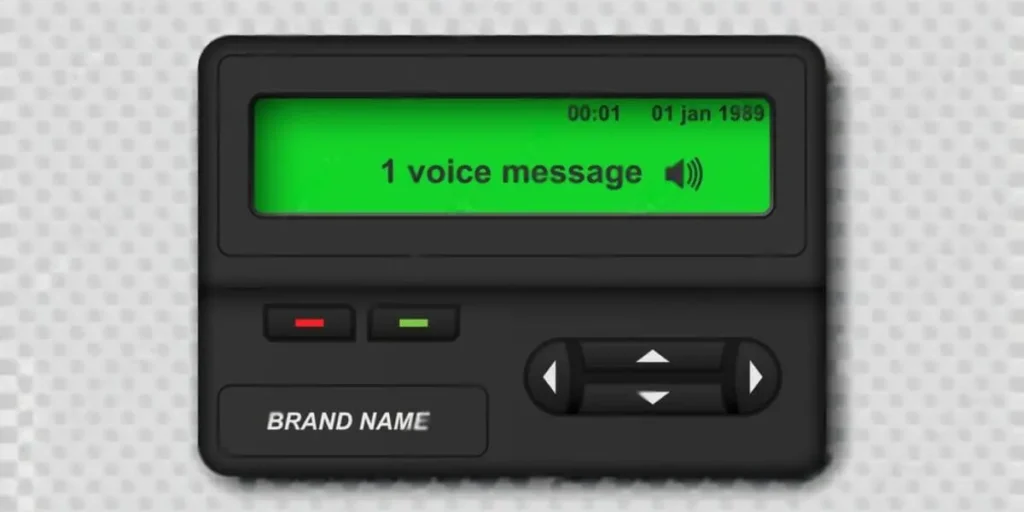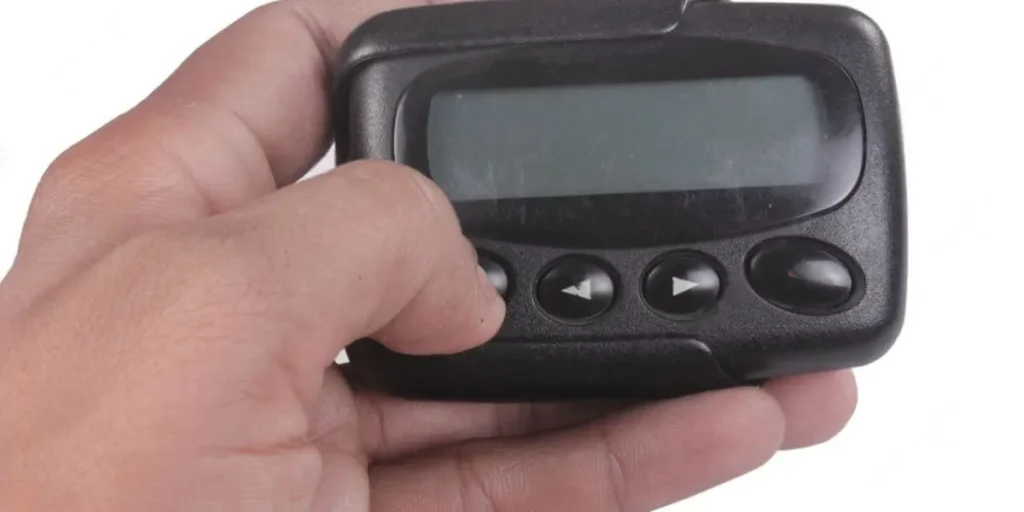Pagers are simple communication devices that receive messages wirelessly. They work like a one-way radio, constantly listening for signals from a specific frequency.
When someone sends a message, it gets transmitted through the air to the pager, which then displays the message for the user. This technology was especially popular before smartphones, providing a reliable way to stay connected without needing a phone.
Who invented the pager?
The pager was invented by Al Gross, who developed the first telephone pager system in 1949. His pagers were initially used in New York City’s Jewish Hospital starting in 1950. This innovation allowed for wireless communication by enabling users to receive messages through a small device.
What’s inside a pager?
A typical pager contains several key components that work together to receive and display messages:
- Circuit Board: This is the main component that houses the electronics needed for processing signals and displaying messages.
- Radio Antenna: A simple coil of wire acts as the antenna, receiving signals transmitted from a base station.
- Receiver: This component captures radio signals sent from the transmitter and converts them into electrical signals.
- Display: Many pagers feature a small screen, often LCD, that shows the messages received.
- Battery: Pagers typically run on batteries, which provide the necessary power for operation.
- Speaker (Optional): Some pagers have a small speaker to alert users with sounds or tones when a message is received.

These components work together to enable the pager to receive and communicate messages effectively.
How do pagers compare with cell phones?
Pagers and cell phones serve different communication needs, and each has unique advantages:
- Reliability: Pagers are often seen as more reliable than cell phones, especially in critical environments like hospitals, where they can transmit messages without interference from medical equipment.
- Signal Reach: Pagers can have better reception in remote areas where cell signals may be weak, ensuring messages get through.
- Battery Life: Pagers generally have a longer battery life compared to smartphones, making them suitable for long-term use without frequent recharging.
- Cost and Maintenance: Pagers typically incur lower maintenance costs than cellphones, appealing to businesses that prioritize budget.
- Functionality: While cell phones allow for two-way communication, pagers are primarily one-way, meaning users can only receive messages, not send replies.
In summary, pagers offer reliable, long-lasting communication suited for specific scenarios, while cell phones provide more versatile and interactive communication options.
Types of paging:
Paging systems can be categorized into several types based on their functionality and technology. Here are the main types:
- One-Way Paging Systems: These systems allow messages to be sent from a central unit to a pager. The pager receives alerts, usually in the form of beeps or vibrations, but cannot send messages back. They are commonly used in hospitals and restaurants.
- Alert-Only Pagers: These are similar to one-way systems but are designed specifically to notify users of alerts without displaying the full message.
- Two-Way Pagers: These advanced systems enable two-way communication, allowing users to both send and receive messages. They function like a basic text messaging system.
- Text Messaging Systems: These systems utilize SMS technology to send text messages directly to pagers, providing more information and flexibility compared to traditional pagers.
- IP Paging Systems: These systems use Internet Protocol for communication, allowing for integration with other digital systems.
Each type serves different communication needs in various settings, enhancing efficiency and response times.
How did the pagers explode?
Pagers experienced a significant rise in popularity during the late 20th century due to several key factors:
- Invention and Early Adoption: Developed in the 1920s, pagers initially served healthcare professionals and emergency services, allowing for quick communication.
- Technological Advancements: Improvements in technology, such as smaller sizes and better battery life, made pagers more accessible and user-friendly.
- Critical Communication in Healthcare: By the 1990s, nearly 80% of hospitals relied on pagers for vital communication, which solidified their role in critical environments.
- Cultural Significance: Pagers became a cultural icon in the 1980s and 1990s, associated with business and personal communication, which further fueled their popularity.
Despite this explosive growth, the advent of smartphones and their multifunctionality led to the decline of pagers as a primary communication device.

What is radio paging?
Radio paging is a communication system that allows messages to be sent wirelessly to small personal devices known as pagers or beepers. The system operates by broadcasting signals over a specific radio frequency, which pagers continuously monitor.
When a message is sent, it is encoded with a unique code associated with the intended recipient, allowing only that pager to receive and display the message.
Key features of radio paging include:
- One-Way Communication: Messages are sent to pagers without the ability for the recipient to reply directly.
- Short Messages: Typically, pagers display brief text or numerical alerts, making them suitable for quick notifications.
- Reliability: Radio paging systems are often more reliable than mobile phones in certain environments, such as hospitals, where interference from electronic devices is a concern.
Overall, radio paging is a cost-effective solution for alerting personnel and ensuring timely communication.
The Master Transmitter:
The master transmitter is a crucial component in radio paging systems, functioning as the central hub that sends out signals to pagers. It broadcasts messages over a specific radio frequency, which pagers are tuned to receive.
When a message is initiated, the master transmitter encodes it with the recipient’s unique code, allowing only the intended pager to display the information.
Key features of the master transmitter include:
- Signal Transmission: It sends a continuous signal that pagers listen to for incoming messages.
- One-Way Communication: Unlike two-way communication devices, the master transmitter only sends messages, and pagers do not respond.
- Reliability: The design allows for effective communication in environments where other devices may face interference, such as hospitals.
Overall, the master transmitter is vital for ensuring that messages are delivered accurately and efficiently to users of paging systems.
